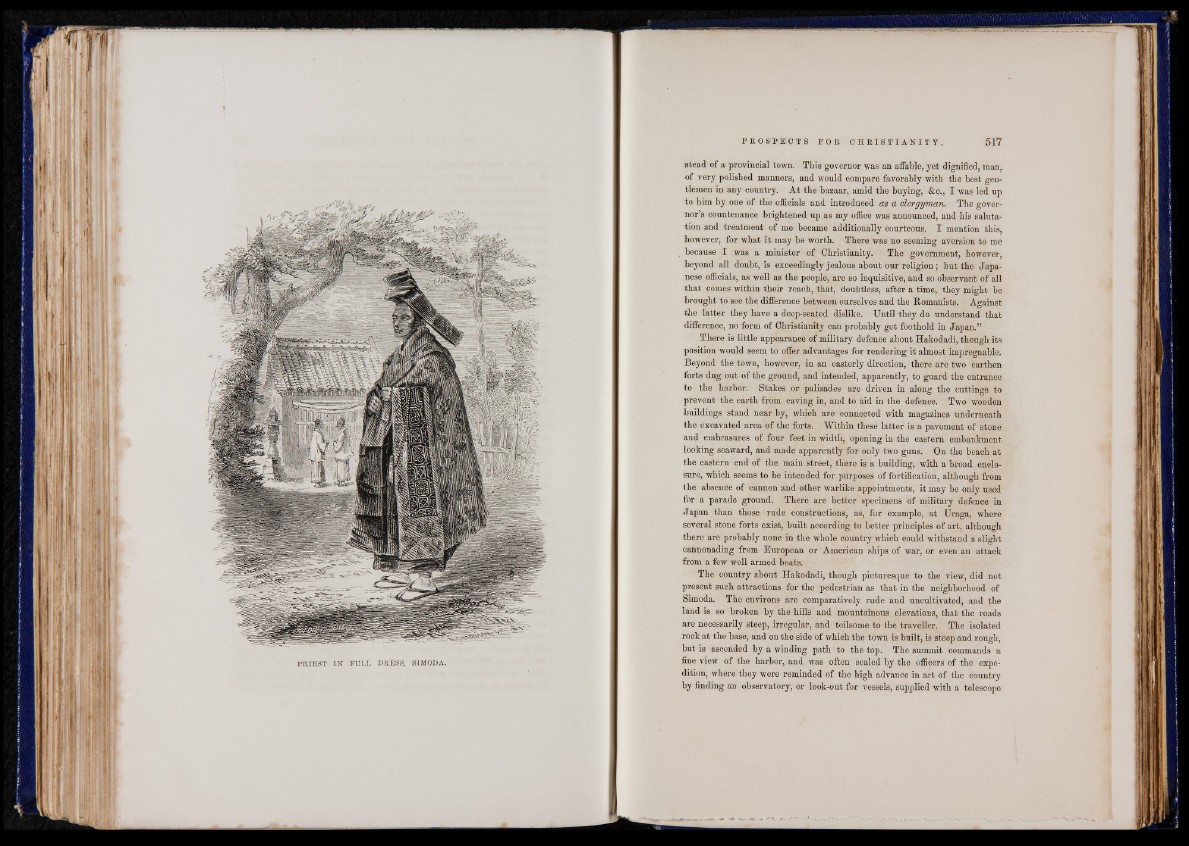
PR IE S T IN FU L L DRESS, SIMODA.
stead of a provincial town. This governor was an affable, yet dignified, man,
of very polished manners, and would compare favorably with the best gentlemen
in any country. At the bazaar, amid the buying, &c., I was led up
to him by one of the officials and introduced as a clergyman. The governor’s
countenance brightened up as my office was announced, and his salutation
and treatment of me became additionally courteous. I mention this,
however, for what it may be worth. There was no seeming aversion to me
because I was a minister of Christianity. The government, however,
beyond all doubt, is exceedingly jealous about our religion; but the Japanese
officials, as well as the people, are so inquisitive, and so observant of all
that comes within their reach, that, doubtless, after a time, they might be
brought to see the difference between ourselves and the Romanists. Against
the latter they have a deep-seated dislike. Until they do understand that
difference, no form of Christianity can probably get foothold in Japan.”
There is little appearance of military defence about Hakodadi, though its
position would seem to offer advantages for rendering it almost impregnable.
Beyond the town, however, in an easterly direction, there are two earthen
forts dug out of the ground, and intended, apparently, to guard the entrance
to the harbor. Stakes or palisades are driven in along the cuttings to
prevent the earth from caving in, and to aid in the defence. Two wooden
buildings stand near by, which are connected with magazines underneath
the excavated area of the forts. Within these latter is a pavement of stone
and embrasures of four feet in width, opening in the eastern embankment
looking seaward, and made apparently for only two guns. On the beach at
the eastern end of the main street, there is a building, with a broad enclosure,
which seems to be intended for purposes of fortification, although from
Ihe absence of cannon and other warlike appointments, it may be only used
for a parade ground. There are better specimens of military defence in
Japan than those rude constructions, as, for example, at Uraga, where
several stone forts exist, built according to better principles of art, although
there are probably none in the whole country which could withstand a slight
cannonading from European or American ships of war, or even an attack
from a few well armed boats.
The country about Hakodadi, though picturesque to the view, did not
present such attractions for the pedestrian as that in the neighborhood of
Simoda. The environs are comparatively rude and uncultivated, and the
land is so broken by the hills and mountainous, elevations, that the roads
are necessarily steep, irregular, and toilsome to the traveller. The isolated
rock at the base, and on the side of which the town is built, is steep and rough,
but is ascended by a winding path to the top. The summit commands a
fine view of the harbor, and was often scaled by the officers of the expedition,
where they were reminded of the high advance in art of the country
by finding an observatory, or look-out for vessels, supplied with a telescope